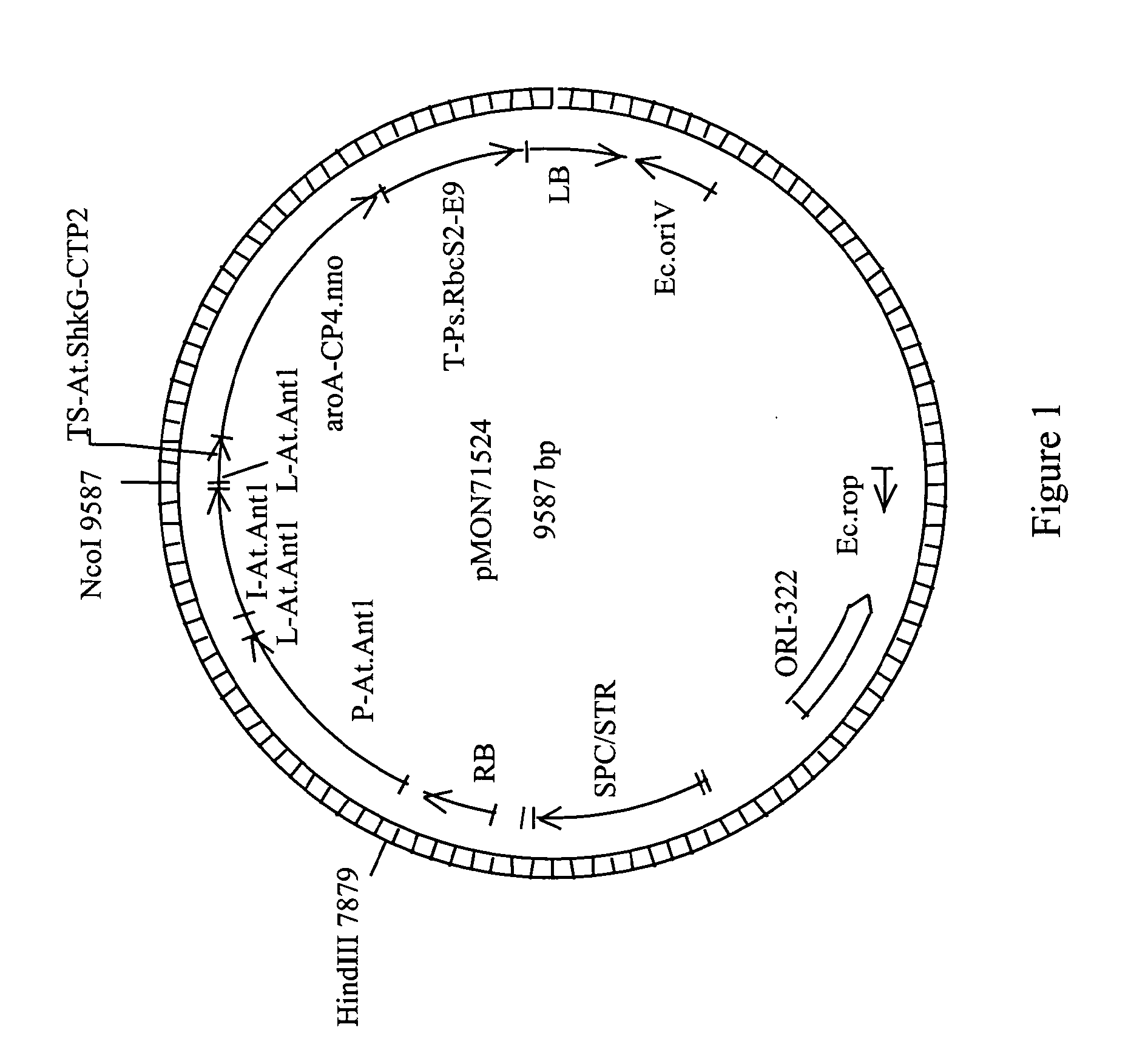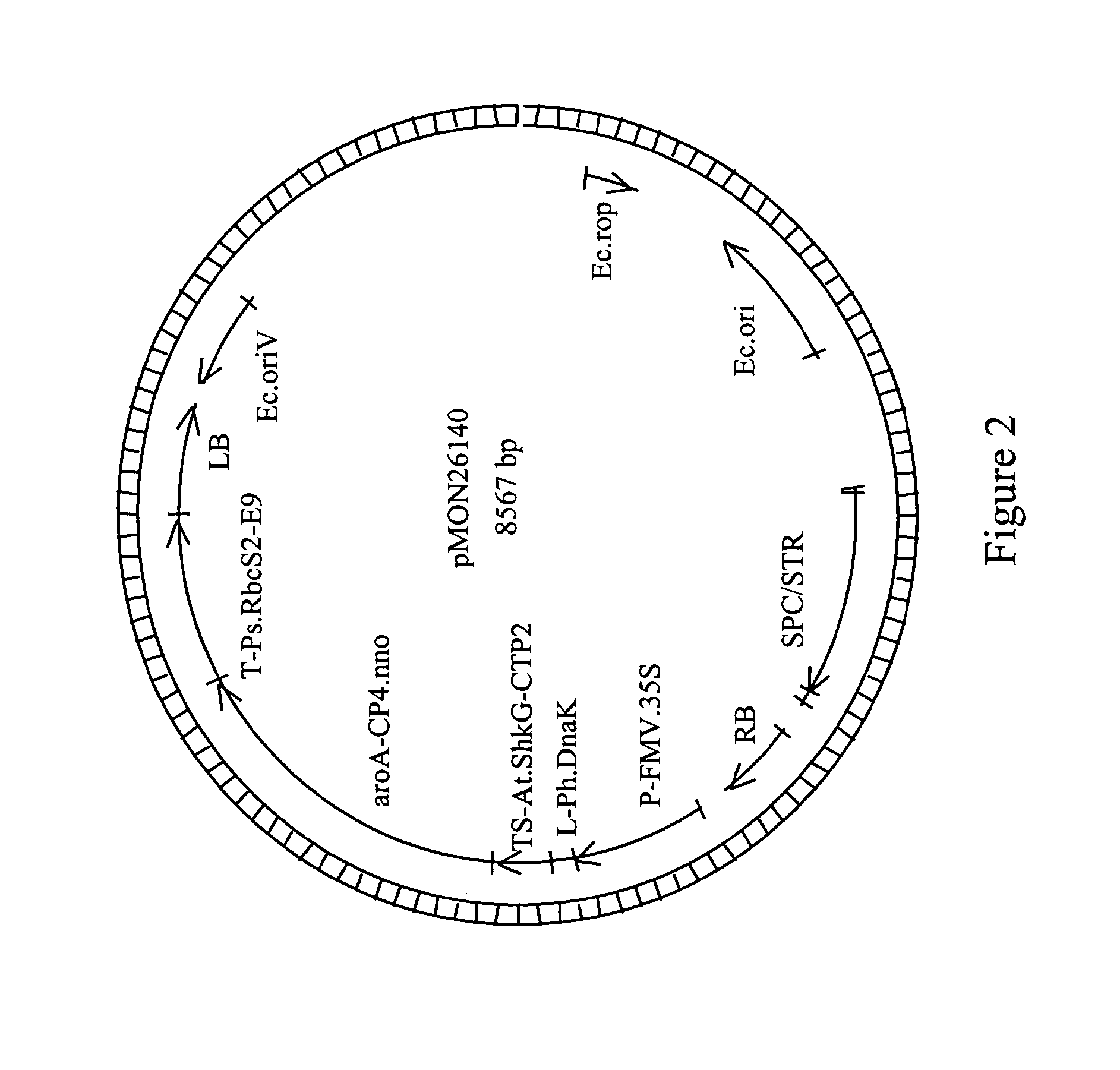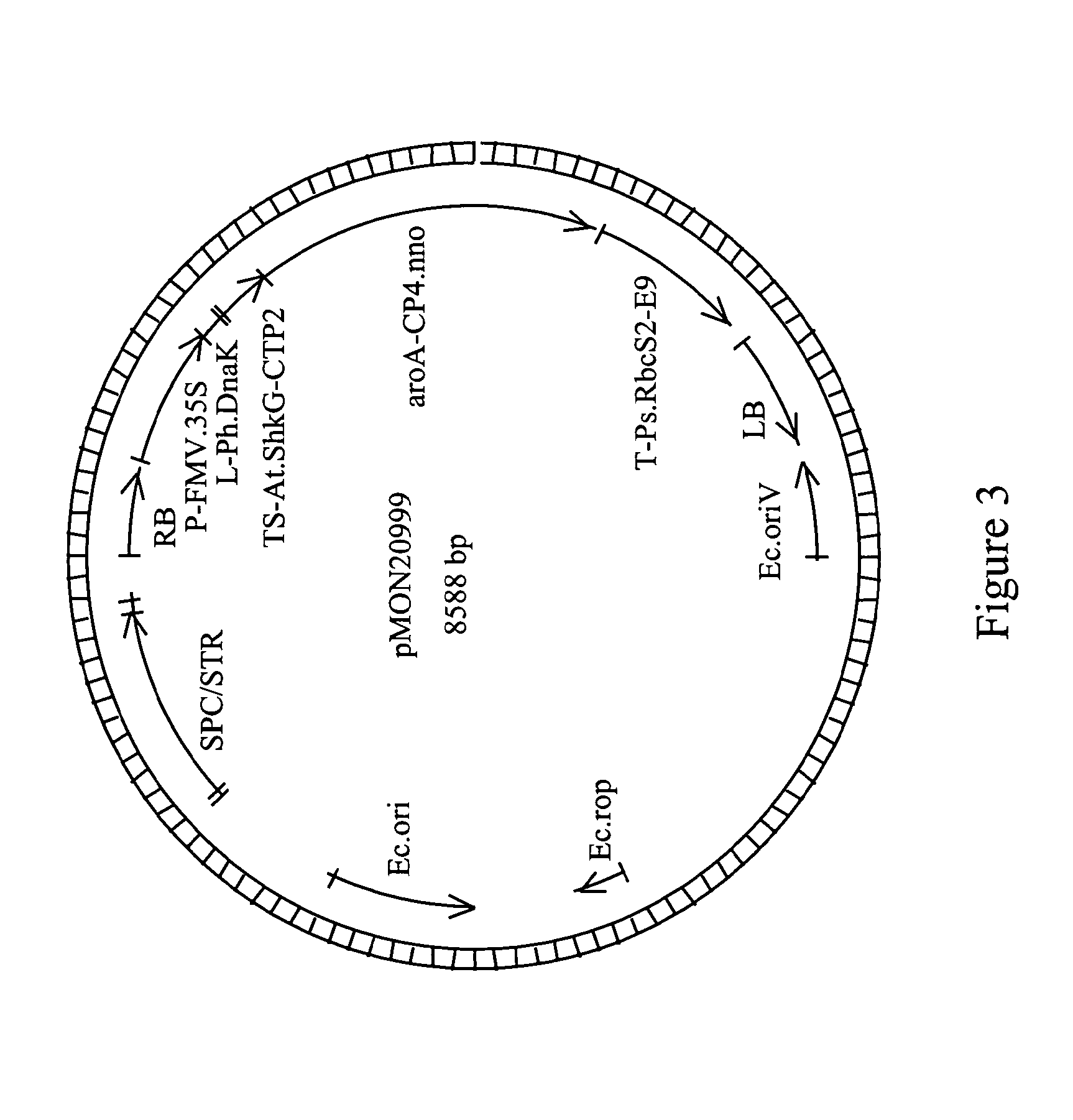Adenylate translocator protein gene non-coding regulatory elements for use in plants
a technology of translocator protein and gene, applied in the field of dna molecules useful for the regulation of transgene expression in plants, can solve the problems that many previously identified regulatory elements fail to provide the patterns or levels of expression required to fully realize the benefits, and achieve the effect of modulating the expression of transgenes in plants and inhibiting growth
- Summary
- Abstract
- Description
- Claims
- Application Information
AI Technical Summary
Problems solved by technology
Method used
Image
Examples
example 1
Polynucleotide Molecule Identification and Cloning
[0140]A DNA molecule was isolated from an Arabidopsis thaliana Ant1 gene comprising a promoter, leader, and intron (referred to herein as P-At.Ant1, L-At.Ant1, and I-At.Ant1, respectively). Genomic DNA from Arabidopsis thaliana was isolated and then used in a DNA amplification method to isolate the At.Ant1 promoter, leader, and intron DNA molecule of the present invention. The DNA molecule was isolated from the genomic DNA template by a PCR based method using a High Fidelity PCR kit (Roche, Indianapolis, Ind.) that amplified the At.Ant1 5′ untranslated region using the DNA primers Ant1-Hind3-For22 (SEQ ID NO:5) and Ant1-NcoI-Rev22 (SEQ ID NO:6). The PCR was set up in 2×50 μL (microliter) reactions as the following: dH2O 80 μL; 10 mM dNTP 2 μL; 10× buffer 10 μL; genomic DNA (50 ng, nanogram) μL; Ant1-Hind3-For22 (10 μM) 3 μL; Ant1-NcoI-Rev22 (10 μM) 3 μL; Enzyme 1 μL. PCR was carried out on a MJ Research PTC-200 thermal cycler (MJ Res...
example 2
Promoter Characterization in Arabidopsis thaliana
[0143]Each gene of interest may be amplified from a genomic or cDNA library using primers specific to sequences upstream and downstream of the coding region. Transformation vectors are prepared to constitutively transcribe DNA in either sense orientation (for enhanced protein expression) or anti-sense orientation (for endogenous gene suppression) under the control of an enhanced Cauliflower Mosaic Virus 35S promoter (U.S. Pat. No. 5,359,142) directly or indirectly (Moore et al. PNAS 95:376-381, 1998; Guyer et al. Genetics 149: 633-639, 1998; International patent application NO. PCT / EP98 / 07577). The transformation vectors also contain a bar gene as a selectable marker for resistance to glufosinate herbicide. The transformation of Arabidopsis plants is carried out using the vacuum infiltration method known in the art (Bethtold et al. Methods Mol. Biol. 82:259-66, 1998). Seeds harvested from the plants, named as R1 seeds, are subsequent...
example 3
Glyphosate Tolerance in Soybean
[0146]This example illustrates plant transformation useful in producing the transgenic soybean plants with constructs containing ANT1-NCRE molecules of this invention, and the resultant production and identification of transgenic seed for transgenic soybean having an improved agronomic trait, i.e. improved nitrogen use efficiency, improved yield, improved water use efficiency and / or improved growth under cold stress as compared to control plants.
[0147]For Agrobacterium-mediated transformation, soybean seeds are germinated overnight and the meristem explants excised. The meristems and the explants are placed in a wounding vessel. Soybean explants and induced Agrobacterium cells from a strain containing construct plasmid DNA with the gene of interest cassette and a plant selectable marker cassette are mixed no later than 14 hours from the time of initiation of seed germination and wounded using sonication. Following wounding, explants are placed in co-cu...
PUM
| Property | Measurement | Unit |
|---|---|---|
| time | aaaaa | aaaaa |
| polynucleic acid | aaaaa | aaaaa |
| nucleic acid | aaaaa | aaaaa |
Abstract
Description
Claims
Application Information
 Login to View More
Login to View More - R&D
- Intellectual Property
- Life Sciences
- Materials
- Tech Scout
- Unparalleled Data Quality
- Higher Quality Content
- 60% Fewer Hallucinations
Browse by: Latest US Patents, China's latest patents, Technical Efficacy Thesaurus, Application Domain, Technology Topic, Popular Technical Reports.
© 2025 PatSnap. All rights reserved.Legal|Privacy policy|Modern Slavery Act Transparency Statement|Sitemap|About US| Contact US: help@patsnap.com



